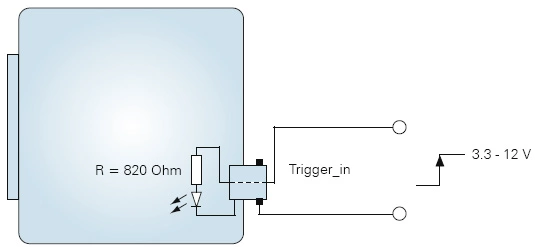Using Trigger and Digital I/Os - Part 2
Published on June 3, 2008 by TIS Marketing.
Please Note: This blog post is part of a series of five posts altogether. The posts include: Part 1, Part 2, Part 3, Part 4 and Part 5.
Trigger input - Hardware
The trigger input of The Imaging Source USB and FireWire CCD cameras is opto-coupled. It permits positive trigger pulses with any amplitude between 3.3 V and 12 V. If you intend to apply higher pulses, please make sure that the current lies in the range of 3 mA to 12 mA.

Trigger input - Exposure & Image Readout Timing
The Imaging Source USB and FireWire CCD cameras offer two different modes of operation:
Free running: The cameras generate a stream of up to 60 images/s depending on their resolution. To considerably reduce the amount of data, the frame rates may be reduced to 30, 15, 7.5 or 3.75 images/s. The exposure length is software adjustable in the range of 100 μs to 30 s. Please note, however, that the camera's clock generator determines the actual moment of exposure. Thus, it is not controllable externally, but measurable using the strobe output. Therefore, this mode of operation is called "free running".
Trigger: The cameras offer a trigger input to determine the moment of exposure. The exposure begins 4.8 μs after the occurrence of a trigger pulse. The exposure length is software adjustable from 100 μs to 30 s. The duration of the image readout is the reciprocal of the current frame rate. Once the image readout has finished, the camera is able to accept a new trigger pulse at any time.

To be continued...
